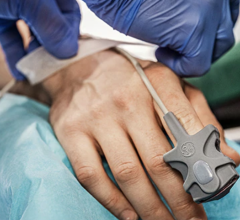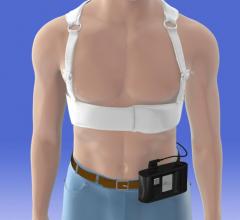
December 18, 2012 — Zoll Medical Corp. announced that its new U.S. Food and Drug Administration (FDA)-cleared OneStep pediatric CPR electrodes are the only electrodes on the market with a built-in sensor that reports CPR quality on young children up to 8 years of age. The first-of-its-kind electrode provides optimal support for pediatric resuscitation when paired with the Zoll R Series monitor/defibrillator and CPR Dashboard.
The R Series offers extensive pediatric capabilities in a professional defibrillator with smart, simple and safe pediatric support. The OneStep pediatric CPR electrodes can be used for monitoring, pacing and defibrillation, as well as CPR.
“Too often, clinicians who treat children need to compromise and adapt devices designed for adults because there isn’t a pediatric version available,” said Jonathan Rennert, president of Zoll. “We recognize that the needs of children are different from adults and have provided a range of capabilities to support the special needs of the youngest patients.”
With the vast majority of pediatric arrests due to respiratory failure, the importance of high-quality CPR cannot be minimized. The 2010 American Heart Association (AHA) Guidelines place a heavy emphasis on quality CPR. Without a built-in CPR sensor, it’s difficult to judge how hard clinicians are pushing when performing CPR on a child. The FDA-cleared CPR Dashboard for the R Series reports the actual depth and rate of compressions delivered. A CPR timer gauges the CPR periods for optimal ventilation, while a metronome is activated if the rate falls below 100 compressions per minute. CPR data can be reviewed after the code and used for quality improvements.
In addition, Zoll’s See-Thru CPR, a proprietary filter that allows clinicians to see if an organized rhythm is developing during CPR, is also active with the pediatric CPR pads. See-Thru CPR helps to reduce the duration of interruptions to CPR and speeds time to shock when indicated.
In the event of a cardiac arrest, as soon as the pediatric electrodes are placed on the patient, the R Series immediately adjusts its AED analysis algorithm to pediatric parameters in order to reduce the likelihood that a compensating rhythm will be terminated. This ensures that any unique pediatric ECG morphology will be accurately identified when a shock is indicated.
The R Series is designed with a focus on simplicity to minimize errors and confusion. When the pediatric electrodes are attached to the R Series, the shock energy is automatically lowered to a starting dose of 50 joules. The R Series then measures the actual patient impedance and adjusts accordingly, delivering sufficient current for effective conversion while not delivering inaccurate energy to the child. The R Series can be configured to automatically lower the setting to whatever dose is desired, even as low as one joule.
For more information: www.zoll.com


 July 28, 2023
July 28, 2023 








